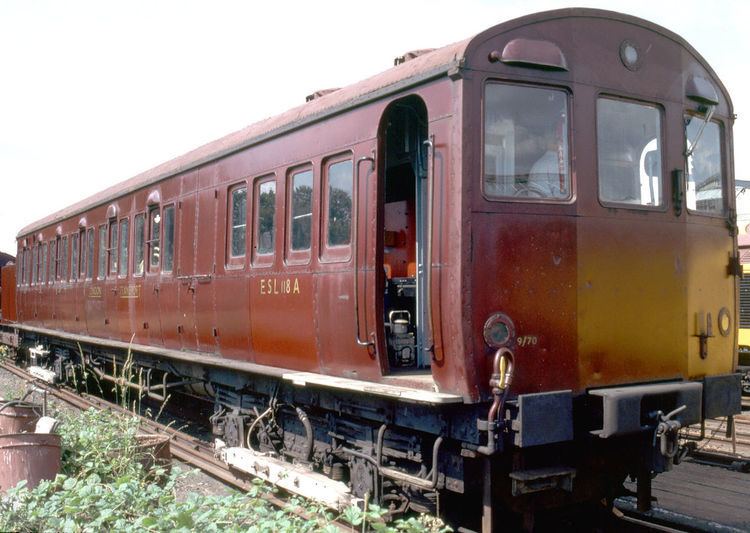In service 1927-1962 Stock type Subsurface | Manufacturer Birmingham RC&W | |
 | ||
Car length 53 ft 9 in (16.38 m)- 55 ft 5 in (16.89 m) | ||
The T Stock was originally built in various batches by Metropolitan-Vickers and the Birmingham Railway Carriage and Wagon Company for the Metropolitan Railway in 1927-31 for use on electric services from Baker Street and the City to Watford and Rickmansworth, though rarely some worked on the Uxbridge branch.
The earlier batches were built from wood and sandwiched trailers of 1898-1923 vintage, however later batches were steel in construction and worked with new built trailers. As built the group has some variations in equipment, mostly to allow use with existing stock such as the Saloon and Ashbury trailers and leading to incompatibilities within the class, however upon transfer the London Transport this was rectified and the entire fleet largely standardized about 1938.
T stock never ran to Aylesbury, though latterly worked to Chesham and Amersham after electrification. Prior to this, trains destined to beyond Rickmansworth were hauled by the famous Metropolitan Vickers Bo-Bo electric locomotives until Rickmansworth where a changeover to steam traction occurred.
These electric multiple unit trains had slam doors with rounded tops, thought to be less prone to damage if accidentally opened in the tunnels north of Baker Street.
In late 1945 coach 2752 was rebuilt as experimental air-door trailer 17000, employing an unusual seating layout with gangways on both sides of the car. In June 1947 a second experimental unit (20000, converted from 2707) entered service. The air doors were controlled from driving trailer 6727, to which the two were permanently coupled. In 1949 17000 was modified with a conventional centre gangway and renumbered 17001. The two cars were withdrawn in 1953, their work as prototypes for the A60 Stock being completed.
The 'T' stock was replaced from 1961 by the A60 and A62 Stock, with the final train running on 5 October 1962.
In 1961, two withdrawn driving motors were converted to sleet locomotives. These were numbered ESL118A and ESL118B, having previously been 2758 and 2749 respectively. After withdrawal, both units were preserved, eventually locating at the Spa Valley Railway but now moved to Quainton.
Equipment details
The first coaches of the first batch (1927) had Westinghouse brakes, Metro-Vickers control systems and MV153 motors; they were used to replace the motor cars working with Bogie Stock trailers that formed 'W' trains.
The rest of the coaches from the first batch had the same motor equipment but used vacuum brakes instead. They ran with converted Dreadnoughts of the 1920/23 batches to form 'MV' stock.
The second batch (of 1929) were very similar in terms of equipment to the first coaches of 1927 and were interchangeable. This batch included specially built trailers and when running with which were known as 'MW' trains; the W indicating Westinghouse Air Brakes were fitted.
The last batch (1931) were like the previous batch but had equipment by the GEC and used WT545 motors. They were found not to be as compatible as hoped, and remained segregated until the LPTB standardisation of Metropolitan Railway rolling stock.
When standardised, the MV stock trains were converted to air brakes. The Bogie Stock coaches in the W stock formations were withdrawn eventually and replaced by seven more converted Dreadnought coaches. Following a reshuffle this allowed 9×8 coach and 10×6 coach trains, which were then designated 'T' stock. 22 motor cars remained spare however, but by 1961 this had been reduced to six spare.
